20 Remote Restaurants Around The World Worth The Extra Miles

Have you ever dreamed of dining in places where few travelers venture? Some of the world’s most incredible restaurants are tucked away in remote corners, offering not just extraordinary meals but unforgettable experiences.
From underwater dining rooms to cliffside tables with breathtaking views, these unique culinary destinations combine exceptional food with jaw-dropping locations. Whether you’re craving a once-in-a-lifetime experience or simply want to savor a meal in a place like no other, these twenty remote restaurants are worth the journey.
Ready to pack your appetite and sense of adventure? Let’s dive into these hidden gems.
1. El Refugio – Patagonia, Argentina
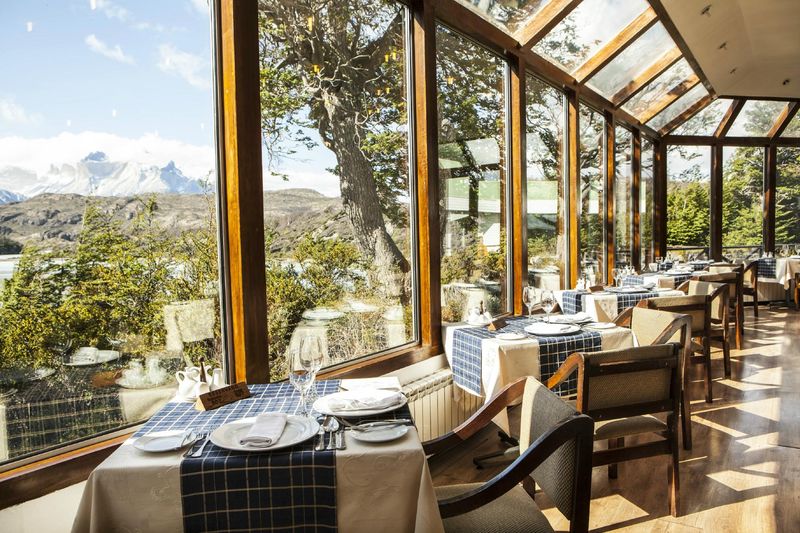
Tucked away in the rugged wilderness of Patagonia sits El Refugio, a stone cabin restaurant that feels like a secret only the mountains know. After a challenging hike through dramatic landscapes, hungry travelers are rewarded with hearty Argentine cuisine cooked over open flames.
The restaurant sources ingredients from local farmers and their own gardens, creating dishes that embody the spirit of Patagonia. Their famous lamb slow-roasted for seven hours melts in your mouth after your journey.
Windows frame views of towering peaks and glacial lakes, making every meal a communion with nature’s grandeur. The limited seating means reservations are essential, sometimes months in advance.
2. The Rock – Zanzibar, Tanzania

Rising dramatically from turquoise waters, The Rock was once a fisherman’s post before being transformed into one of Africa’s most iconic dining spots. During low tide, guests can walk to this tiny island restaurant; at high tide, a boat ferries diners across.
Fresh seafood dominates the menu, with octopus caught that morning and lobster prepared according to local Zanzibari recipes. The outdoor terrace, barely larger than a living room, offers 360-degree views of the Indian Ocean stretching to the horizon.
Sunset transforms this humble rock into a silhouette against flaming skies. With just twelve tables total, securing a reservation feels like winning a culinary lottery.
3. Tenshino – Tokyo, Japan

Hidden among ancient cedar forests two hours outside Tokyo, Tenshino requires guests to follow a lantern-lit path through the woods to reach its entrance. This eight-seat restaurant occupies a 300-year-old farmhouse where Chef Hiro Takeda serves kaiseki meals that change with each season and full moon.
Winter brings dishes served on ice sculptures; summer means dining beneath stars on an open deck. The restaurant keeps no website or phone number—reservations happen through a network of previous guests who pass along a special wooden token.
Meals last four hours minimum, with each course telling a story about Japanese culinary traditions. Foragers deliver mountain vegetables and mushrooms daily to the kitchen door.
4. Café de la Plage – Seychelles
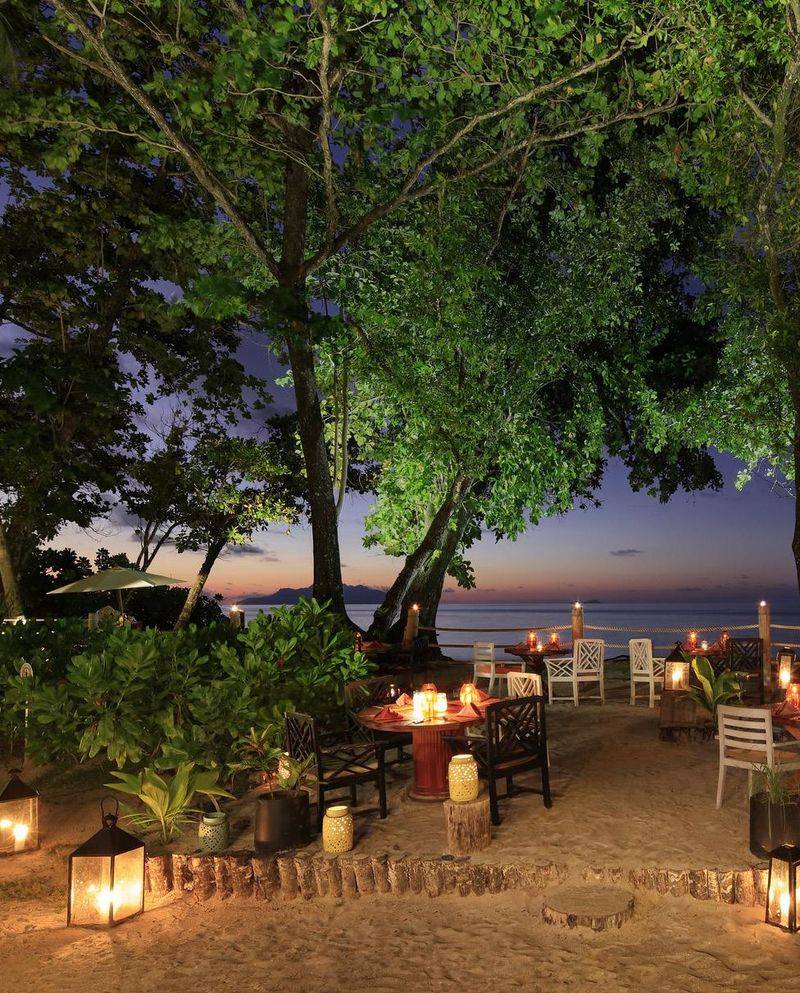
If paradise had a dining room, it might be Café de la Plage, perched on a private beach accessible only by boat or a 45-minute hike through jungle paths. The open-air structure uses salvaged driftwood and palm fronds for its roof, with sand floors throughout.
Helmed by Seychellois chef Marie Clarisse, the kitchen serves just one menu daily based on what fishermen deliver that morning. Guests eat communally at tables carved from single logs that wash ashore during monsoon season.
Between courses, diners often splash in crystal waters just steps from their table. The café operates without electricity, using only candlelight after sunset and cooking everything in traditional clay ovens buried in the sand.
5. Gulch Restaurant – Alaskan Wilderness, USA
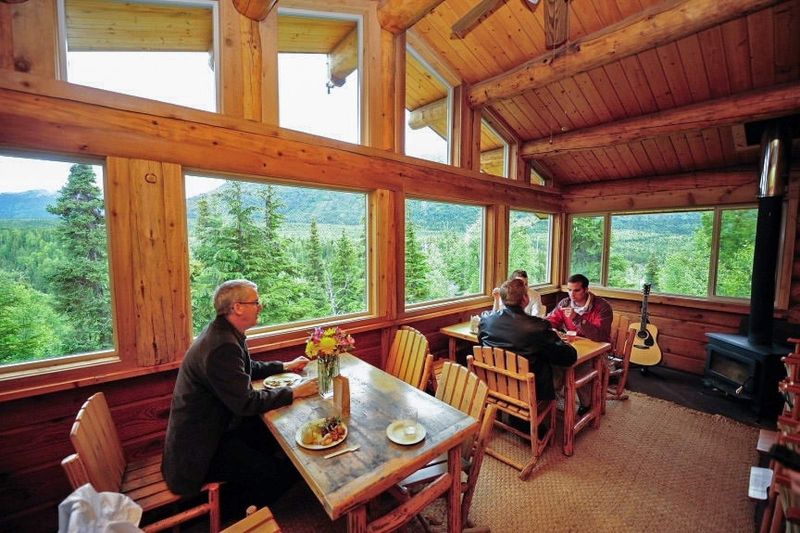
Accessible only by bush plane or a three-day hiking expedition, Gulch Restaurant operates just four months each year when the Alaskan wilderness thaws enough to allow passage. Former wilderness guide Sam Korthof built the log cabin restaurant with his bare hands, using trees felled by lightning strikes.
Meals celebrate Alaska’s bounty—wild salmon caught in streams visible from your table, moose stew simmered for days, and berries harvested from surrounding meadows. The dining room features just six tables arranged around a massive stone fireplace that provides the only heat.
Between dinner courses, guests often spot grizzlies fishing in nearby streams or northern lights dancing overhead through skylights cut into the cedar roof.
6. Skyline Restaurant – New Zealand

Perched atop Cecil Peak overlooking Queenstown, Skyline Restaurant requires guests to board a helicopter for a breathtaking fifteen-minute flight over alpine landscapes. The glass-walled dining room seems to float above Lake Wakatipu, creating the illusion that tables are suspended in mid-air above the Southern Alps.
Chef Melissa Cooke transforms New Zealand’s finest ingredients—green-lipped mussels, Fiordland venison, and Central Otago wines—into memorable meals that complement the dramatic scenery. The restaurant’s unique acoustics amplify the sounds of nature while dampening human voices.
During winter months, diners might witness avalanches cascading down distant mountains between courses. The restaurant accommodates just twenty guests per night, making it one of New Zealand’s most exclusive dining experiences.
7. Epernay Restaurant – Uganda
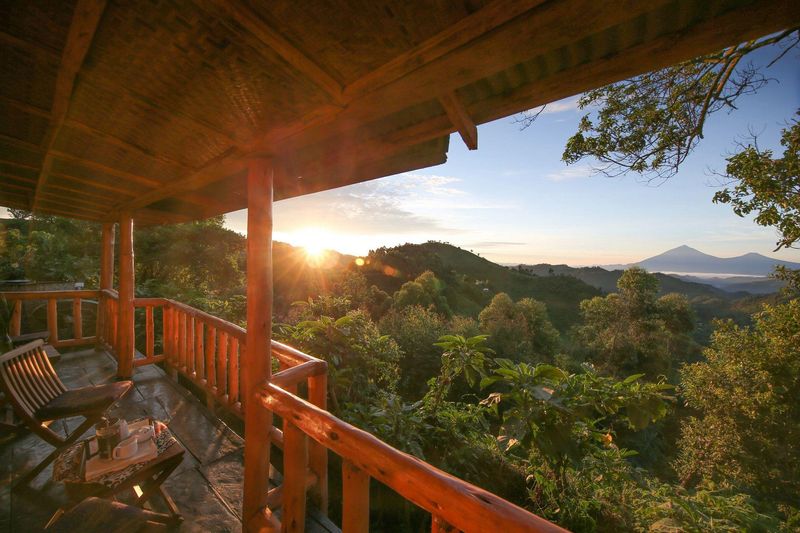
Nestled within Bwindi Impenetrable Forest, Epernay offers what might be the world’s most unusual dining location—a treehouse built 60 feet above the forest floor among ancient fig trees. Reaching the restaurant requires a guided trek through gorilla habitat, often with close encounters with these magnificent creatures.
French-Ugandan chef Pascal Olweny creates fusion cuisine using indigenous ingredients and techniques learned during his training in Paris. Solar panels power the tiny kitchen, while rainwater collection systems supply all cooking needs.
Diners eat on a circular platform surrounding the tree trunk, with nothing but wooden railings between them and the vibrant forest canopy. Night services include nocturnal forest tours between courses, where guests spot rare birds and primates with night-vision equipment.
8. La Granja – Ibiza, Spain

Far from Ibiza’s famous party scene, down dirt roads that wind through ancient olive groves, La Granja occupies a 200-year-old farmhouse on a working agricultural estate. The restaurant operates on a unique model—there are no menus or set dining times.
Guests wander the farm with the chef each morning, selecting ingredients and learning about biodynamic farming practices that guide all cultivation. Meals might be served in the lavender fields, beside the stone threshing floor, or under the shade of carob trees, depending on the day’s harvest and weather.
The kitchen uses no electricity—all cooking happens over wood fires or in solar ovens. Diners must stay overnight at the farm’s minimal accommodations, as the dining experience often continues until dawn.
9. Dune Restaurant – Mauritius
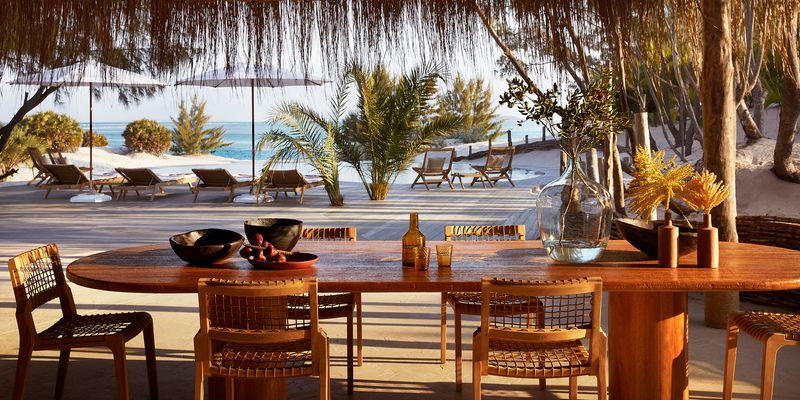
Hidden within a protected sand dune ecosystem on Mauritius’s eastern coast, Dune Restaurant appears and disappears with the changing seasons. The dining area is rebuilt each November after monsoon season, using sustainable bamboo and reclaimed materials that leave no permanent footprint on the delicate environment.
Chef Ananda Ramchurn creates Creole-French fusion dishes cooked in sand pits—a technique used by early island settlers. The restaurant’s location shifts slightly each year based on dune migration, making every season a new experience even for returning guests.
Tables sit directly on the sand, with no floors or permanent walls—just billowing fabric that can be adjusted based on wind direction. Finding the restaurant requires following a series of unmarked wooden posts across the dune field.
10. Blue Hill – Stone Barns, New York, USA
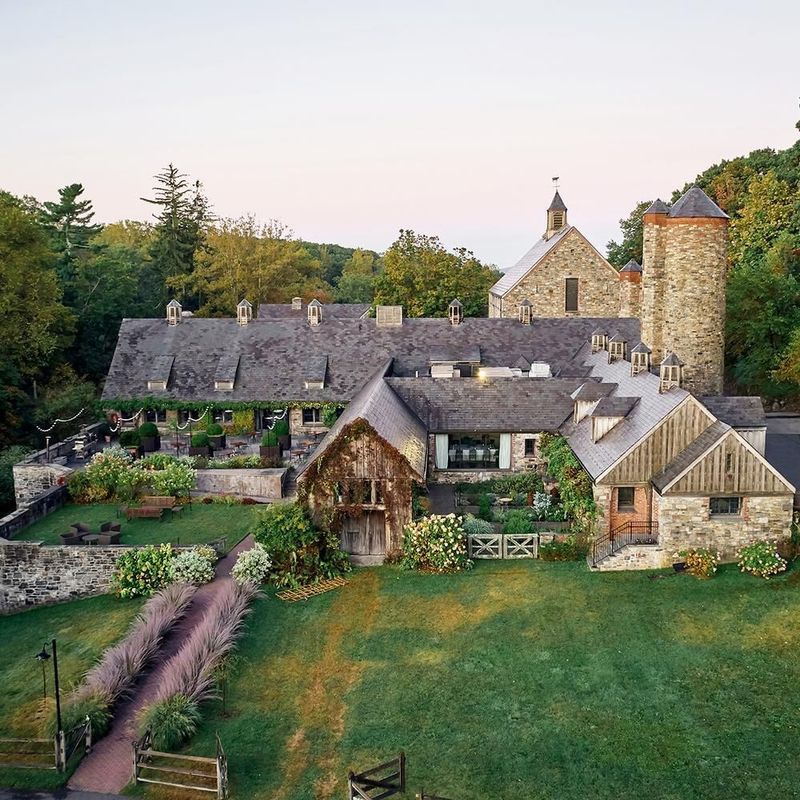
While less geographically remote than others on this list, Blue Hill at Stone Barns creates intellectual and experiential distance from conventional dining through its immersive farm experience. Located on a working farm in New York’s Hudson Valley, the restaurant requires guests to participate in agricultural activities before their meal begins.
Chef Dan Barber’s revolutionary approach means diners might harvest vegetables, collect eggs, or assist with cheese-making before sitting down. The dining room occupies a meticulously restored stone dairy barn where natural light filters through century-old windows.
No printed menus exist—instead, a sequence of up to 30 small courses tells the story of the surrounding landscape through taste. The restaurant’s commitment to agricultural education makes the journey as much about changing perspectives as about physical distance.
11. El Quinto – Mexico City, Mexico

Though technically within Mexico City limits, El Quinto requires adventurous diners to descend 50 meters below ground into ancient lava tubes formed when nearby volcanoes erupted centuries ago. The restaurant occupies a series of interconnected volcanic caverns where temperature remains a constant 65 degrees regardless of surface weather.
Chef Rodrigo Pacheco illuminates the space with thousands of beeswax candles, creating dancing shadows across mineral-streaked walls. The menu focuses on pre-Hispanic ingredients—insect proteins, ancient corn varieties, and wild herbs that grow nowhere else in the world.
Acoustics within the caverns amplify the sounds of cooking and traditional Mexican music played on instruments made from cave materials. Guests must sign liability waivers and wear provided helmets during the initial descent to the dining area.
12. The Cliff House – Cape Town, South Africa
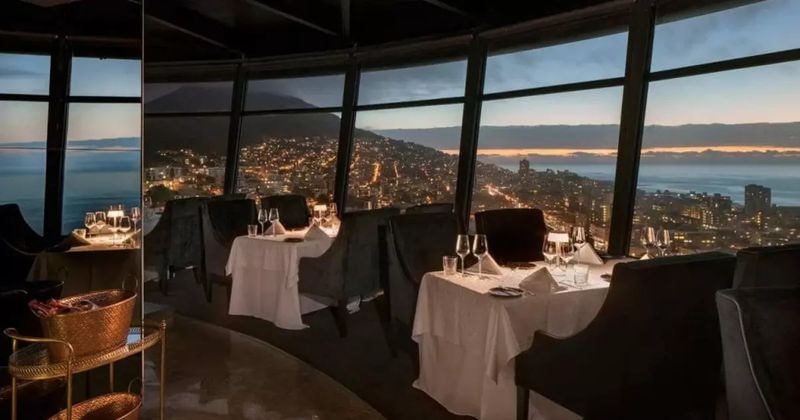
Dramatically anchored to a sheer cliff face 300 feet above the crashing Atlantic, The Cliff House offers perhaps the world’s most precarious dining location. Reaching the restaurant requires a guided rappel down the rock face or arrival by helicopter to a tiny landing pad jutting from the cliff.
Chef Thandi Nkosi specializes in South African game meats and seafood pulled from waters visible below. The dining room features glass floors that create the sensation of floating above the ocean, while floor-to-ceiling windows frame views of Cape fur seals playing in the surf below.
During whale migration season, diners often spot humpbacks breaching between courses. The restaurant closes during South Africa’s stormy season when powerful winds make dining too dangerous—even the most adventurous eaters have limits.
13. Hameiri House – Jerusalem, Israel
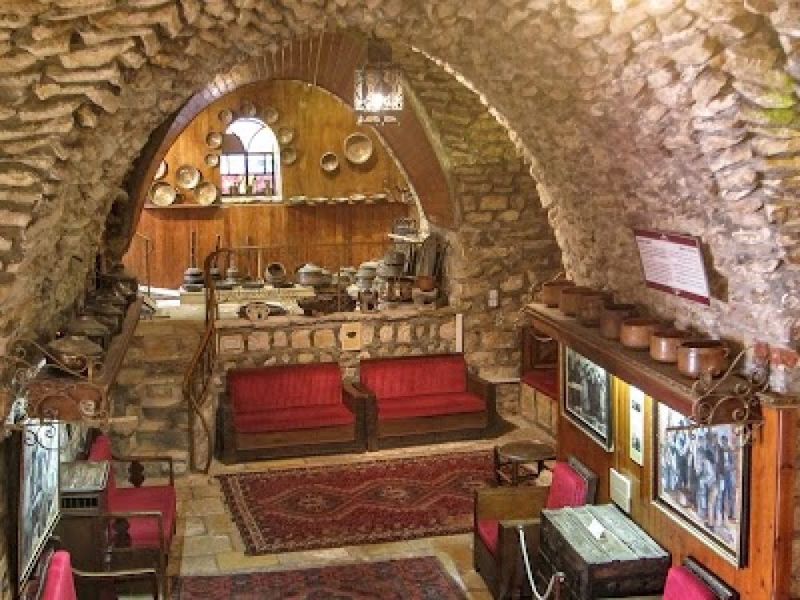
Hidden behind an unmarked door in Jerusalem’s Old City, Hameiri House occupies the upper floors of a 12th-century Crusader-era building. Finding the entrance requires navigating a maze of ancient alleyways too narrow for vehicles, making the journey itself a step back in time.
Chef Moshe Basson serves biblical cuisine—dishes mentioned in ancient texts using heirloom ingredients grown in the same valleys where they’ve been cultivated for thousands of years. The dining room features original stone arches and windows overlooking the Western Wall and Dome of the Rock.
Between courses, Jerusalem’s competing calls to prayer create a haunting soundtrack. Many ingredients come from the restaurant’s rooftop garden, which uses irrigation methods unchanged since Roman times. The restaurant seats just 18 guests per night.
14. Under – Lindesnes, Norway
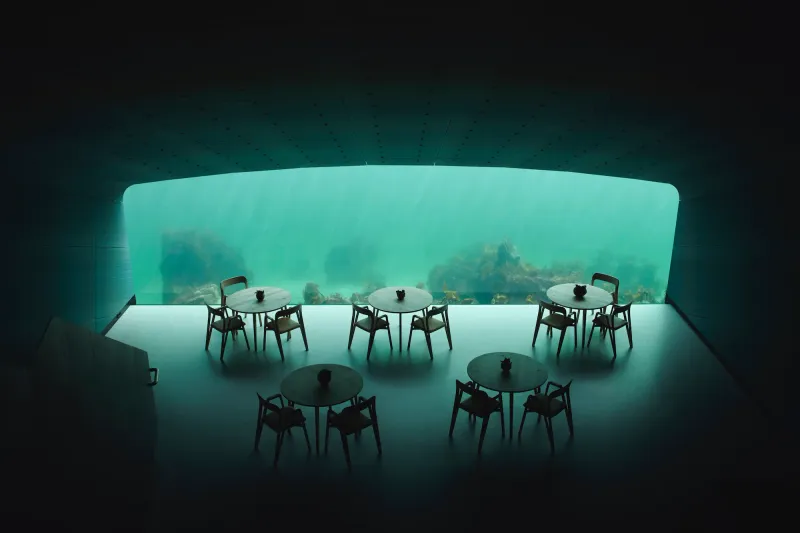
Half-submerged beneath the icy waters of Norway’s southernmost point, Under creates the sensation of dining at the bottom of the sea. The concrete structure resembles a sunken ship, with one end anchored on shore and the other extending 16 feet underwater where a massive acrylic window frames the North Atlantic seafloor.
Marine biologists work alongside chefs to create sustainable seafood dishes based on creatures visible through the window—often ingredients swimming past diners’ tables minutes before being served. The restaurant’s exterior doubles as an artificial reef, attracting marine life that enhances the viewing experience.
Winter storms create dramatic dining as massive waves crash against the window. The restaurant’s remote location in Lindesnes requires a journey through sparsely populated coastal landscapes, adding to the sense of isolation.
15. The Tasting Room – Napa, USA

Nestled deep within a private Napa Valley estate accessible only via a narrow mountain road that winds through ancient redwoods, The Tasting Room offers California’s most exclusive wine-pairing experience. The restaurant occupies a glass pavilion built around a 400-year-old oak tree, with branches extending through the ceiling.
Chef Helena Wong creates micro-seasonal tasting menus where dishes change weekly based on what’s perfect at that moment. The restaurant maintains no social media presence or website—guests receive directions only after confirmation of their reservation, which typically requires joining a year-long waiting list.
Each table features custom-designed chairs that adjust automatically to each guest’s posture for maximum comfort during the five-hour dining experience. Between courses, diners are encouraged to explore the surrounding vineyards with glass in hand.
16. Auberge de la Madone – Provence, France

Perched in a medieval village clinging to a mountainside in Provence, Auberge de la Madone requires guests to park below and climb 400 ancient stone steps through lavender fields to reach its terrace. The restaurant occupies what was once a 15th-century monastery where monks cultivated herbs now used in the kitchen.
Chef Lucien Rossignol maintains traditions dating back centuries—bread baked in wood-fired ovens built by Roman settlers, and vegetables grown using irrigation channels designed during the Middle Ages. The dining room features no electricity, with meals served by candlelight as they would have been centuries ago.
Many ingredients come from wild-foraging expeditions conducted each morning along mountain paths. The restaurant closes during winter when snow makes the village inaccessible.
17. The Lodge – Quebec, Canada

Reachable only by floatplane or a two-day canoe journey through pristine wilderness, The Lodge sits on the shores of a glacial lake deep within Quebec’s boreal forest. The log structure was hand-built by Cree craftsmen using traditional techniques and materials harvested within walking distance.
Chef Jean-Pierre Tremblant focuses on hyperlocal cuisine—pike and trout caught each morning, moose and venison from sustainable harvests, and foraged ingredients like fiddlehead ferns and cloudberries. During winter months, guests arrive by dogsled, and the dining room is heated solely by massive stone fireplaces.
Between courses, diners often spot northern lights reflecting on the lake’s surface. The restaurant operates completely off-grid, generating power from a small hydroelectric system in a nearby stream.
18. Le Bernardin – New York, USA
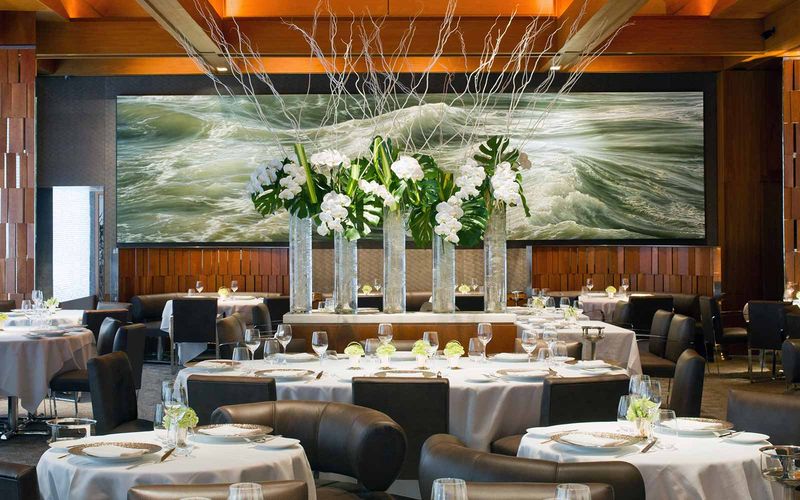
While geographically accessible in Manhattan, Le Bernardin creates remoteness through its transportive dining experience that mentally removes guests from the bustling city outside. Chef Eric Ripert’s legendary seafood temple feels worlds away from New York once you’re seated in the serene dining room designed to evoke the feeling of being aboard a luxury ocean liner.
The restaurant’s famous tasting menu progresses from “almost raw” to “barely touched” to “lightly cooked” seafood, showcasing fish flown in daily from remote corners of the world. Each plate arrives as a piece of edible art that momentarily suspends reality.
The hushed atmosphere and impeccable service create an island of calm amid urban chaos. Getting a reservation often requires planning months ahead, creating temporal distance that adds to the journey.
19. Yuniko Restaurant – Kyoto, Japan

Hidden within a 700-year-old temple complex rarely visited by tourists, Yuniko requires guests to participate in a traditional tea ceremony before their meal begins. The restaurant occupies former monks’ quarters where sliding paper doors frame meticulously maintained Zen gardens designed to change appearance with each season.
Chef Yuki Tanaka serves shojin ryori—traditional Buddhist vegetarian cuisine developed by monks centuries ago. Many ingredients come from the temple’s gardens, where vegetables are grown according to lunar cycles and ancient agricultural texts.
Meals unfold in complete silence, with each of the 12 courses designed to focus attention on a single ingredient. Finding the unmarked entrance requires following a series of stone lanterns through bamboo forests surrounding the temple grounds.
20. Perry Street – New York, USA
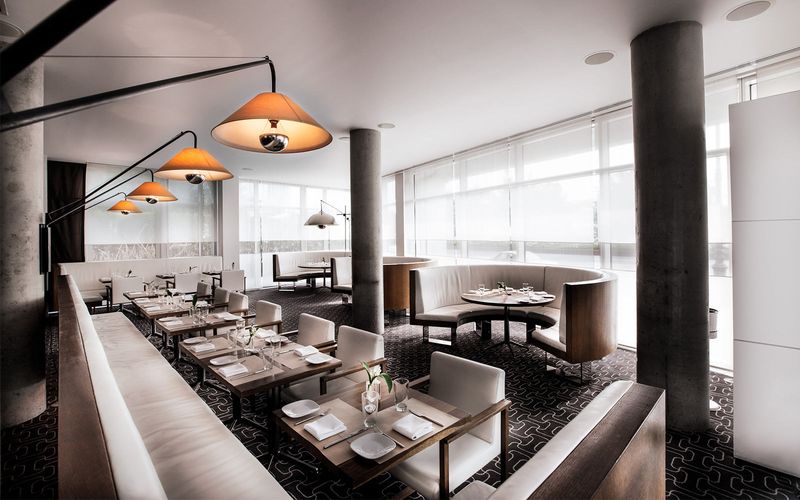
While physically located in Manhattan’s West Village, Perry Street creates conceptual remoteness through its unique dining concept that transports guests to different world locations each month. The minimalist white dining room transforms completely every 30 days to reflect a new global destination—from Moroccan desert camps to Antarctic research stations.
Chef Jean-Georges Vongerichten and his son Cedric create immersive experiences where everything from staff uniforms to background sounds matches the chosen location. The restaurant maintains no permanent menu, instead crafting dishes that represent the featured destination using authentic techniques and ingredients.
The restaurant’s blank-canvas approach means returning diners never experience the same restaurant twice. Reservations open at midnight on the first of each month and typically sell out within minutes as diners eagerly await the announcement of the next destination.
